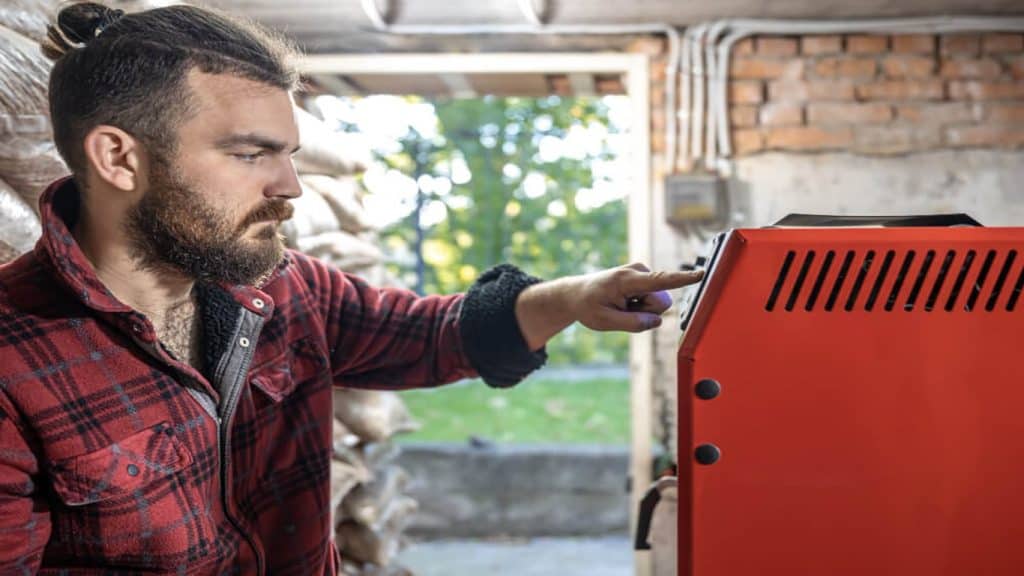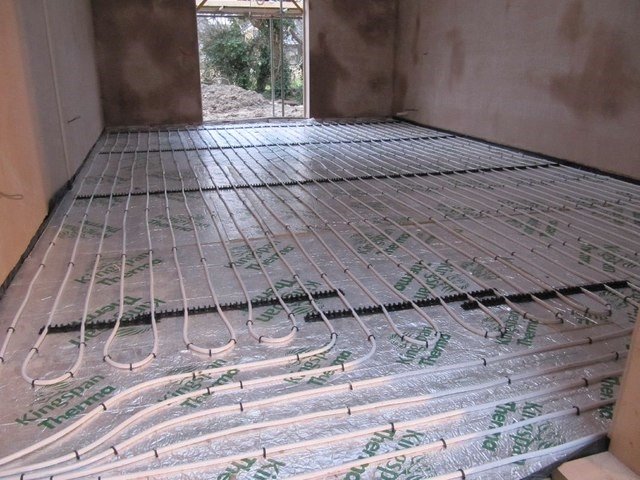
You are thinking about purchasing underfloor heating, but how does underfloor heating work? Is there more to these heating systems than meets the eye? Find the solutions here.
Curious about making your home cosier? Underfloor heating might be the perfect solution you’re looking for. Now say you are thinking of purchasing an underfloor heating kit, or already have one equipped in your home, and you need to be reminded of how underfloor heating works. In this article, we will delve into the mechanics of underfloor heating systems, explaining how they provide an even, efficient warmth compared to traditional heating methods. From installation specifics to choosing the right materials, we cover all you need to know about transforming your living space with underfloor heating.
Key Points:
- Explore the differences between electric and water-based underfloor heating systems.
- Understand key components and how they work together.
- Learn about suitable flooring materials for optimal efficiency.
- Compare the cost-effectiveness of underfloor heating vs. traditional radiators.
- Installation insights for both underfloor heating in new builds and old houses.
- How Underfloor Heating Works
- Types of Underfloor Heating Systems
- How Underfloor Heating Systems Work with Boilers and Heat Pumps
- How Does Underfloor Heating Work with Boilers?
- Ground Source Heat Pumps (GSHPs)
- Air Source Heat Pumps (ASHPs)
- Choosing the Right Flooring Materials
- Are Underfloor Heating Systems Better Than Radiators?
- Understanding the Core Components of Underfloor Heating
- Thermostats and Controls
- Control Pack and Manifold Operations
- The Role of the Wiring Centre
- Pipe Circuits and Layout
- FAQs
How Underfloor Heating Works
Underfloor heating systems offer a modern way to heat homes evenly and efficiently. By understanding how underfloor heating works, homeowners can make better, informed decisions about the best systems for their needs. Essentially, whether electric or water-based, underfloor heating distributes warmth from the ground up, leveraging the principle that heat rises.
Types of Underfloor Heating Systems
The two main types of underfloor heating systems are electric and water-based, each with unique benefits and suitable applications.
Electric Underfloor Heating
Electric underfloor heating systems, often referred to as ‘dry’ systems, is a simple, efficient system that uses electric mats, sheets, or wires installed beneath the floor surface. These systems are particularly advantageous for smaller spaces such as bathrooms or en suites where installing larger systems may be impractical. Options include:
- Matting Systems: Ideal for regular-shaped, larger rooms with hard flooring like stone, porcelain or ceramic tiles.
- Foil Mat Systems: Designed specifically for use under laminate flooring.
- Loose Wire Systems: Flexible solutions for rooms with irregular shapes, also suitable for stone and tile floors.
Electric systems are generally less expensive to install than their water-based counterparts. However, they might cost more to operate, making them a consideration for areas used less frequently or for shorter durations.
Water Underfloor Heating
Wet or water underfloor heating systems integrate with your home’s central heating system. They circulate warm water through pipes laid under the floor, which then radiate heat upwards. This system is slightly more complex and costly to install but is more economical in the long run, particularly suitable for larger or regularly used areas of the home. The benefits include:
- Lower operational costs compared to electric systems.
- Integration with boilers or heat pumps, bringing better energy efficiency.
How Underfloor Heating Systems Work with Boilers and Heat Pumps

Whether you choose electric or water-based underfloor heating, the systems can be adapted to work seamlessly with existing heating solutions like boilers and heat pumps, as mentioned above. Water-based systems, in particular, benefit from the efficient, low-temperature heat provided by heat pumps, offering a consistent and gentle heating solution that is ideal for full-home applications.
How Does Underfloor Heating Work with Boilers?
When considering how underfloor heating works with a boiler, it’s important to understand that the boiler heats water to a lower temperature than required for radiators—usually around 40°C to 50°C. This warm water circulates through the pipe circuits embedded beneath the flooring, gently and evenly raising the room temperature.
Ground Source Heat Pumps (GSHPs)
Ground source heat pumps with underfloor heating are easily possible. These pumps utilise the stable underground temperature to heat water, which is then circulated through the underfloor heating system. The synergy between the low-temperature heat output of GSHPs and the large surface area of underfloor systems makes this combination extremely energy efficient. By extracting heat from the ground, GSHPs provide a sustainable and cost-effective method to operate underfloor heating, aligning perfectly with eco-friendly building practices.
Air Source Heat Pumps (ASHPs)
Similar to their ground-sourced counterparts, air source heat pumps with underfloor heating are an effective companionship too. ASHPs absorb heat from the outside air and increase its temperature through a heat exchanger to adequately warm the water for the underfloor pipes. Since underfloor heating requires lower water temperatures, ASHPs operate with commendable efficiency, even in colder climates. This type of pump is easier to install compared to GSHPs, making it a more versatile option for both new builds and retrofit installations.
Choosing the Right Flooring Materials
The efficiency of an underfloor heating system is also influenced by the type of flooring under which it is installed. Materials that conduct heat well, such as tile and stone, are better for underfloor heating because they distribute heat evenly and hold warmth, reducing energy costs.
Wood can also be a good conductor if it’s sufficiently thin and dense, though it requires careful selection to avoid moisture-related expansion. Carpets, while there is still potential here, should have low thermal resistance to ensure heat passes through effectively.
Here are some helpful articles regarding underfloor heating and flooring:
- Best flooring for underfloor heating
- Bamboo flooring for underfloor heating
- Does underfloor heating work with carpets
Are Underfloor Heating Systems Better Than Radiators?
Underfloor heating provides a more uniform distribution of heat compared to traditional radiators, which often create hot spots and cold areas. Say you have a radiator positioned by a window, whereupon the heat is more likely to leak through the window, and this will be the warmest spot of the room too.
Underfloor heating, however, is laid out across the entire floor and distributes an even temperature across the whole room. By heating from the floor up, these systems ensure no heat is wasted at the ceiling, providing a more comfortable and cost-effective heating solution throughout the space.
But for those that want the best of both worlds, discover how underfloor heating and radiators can work together.
Understanding the Core Components of Underfloor Heating

Due to the variations of underfloor heating systems, it is easy to get confused about the valuable components needed to make each system work properly. Here is what you need to know about underfloor heating controls:
Thermostats and Controls
The heart of the control system lies within the individual room (or multi-zone heating) thermostats. These devices not only monitor but also control the heating requirements and desired temperatures for each room. Modern thermostats are intelligent, communicating with the central wiring centre to activate the heating as needed, thus optimising energy use and comfort.
Control Pack and Manifold Operations
Water-based underfloor heating systems are maintained by a control park, regulating the water temperature, usually around 50°C, before it enters the manifold. The underfloor heating manifold acts as a hub, distributing warm water through the connected pipe circuits underneath the floor, ensuring an even spread of heat.
The Role of the Wiring Centre
The wiring centre for electric underfloor heating manages the heat distribution by channelling signals from the room thermostats. It controls the activation of zone actuators and the boiler, adjusting the flow of heat to where it is needed most, thereby maintaining an efficient heating system.
Pipe Circuits and Layout
The layout of pipe circuits is crucial for optimal, even heating performance. These circuits are designed to cover the entire floor area, maintaining a temperature slightly above the room’s temperature, which ranges from 25°C to 28°C. The strategic positioning of the manifold centralises the flow, reducing the length of pipe runs and enhancing the system’s efficiency.
The installation can be customised based on the specific architectural nuances of a property, using our bespoke kit builder range. Build the underfloor heating kit that you want and will suit your home best with us.
In summary, underfloor heating offers an efficient, evenly distributed heating solution that can be paired effectively with both boilers and heat pumps. Whether using electric or water-based systems, underfloor heating provides consistent warmth across entire floor surfaces, reducing energy costs and bringing better comfort to your home. This system’s compatibility with various heat sources, including ground and air source heat pumps, makes it a versatile and eco-friendly option for modernising home heating practices efficiently. Is there something that you think we may have missed in our coverage of underfloor heating explained? Contact us today and our team of experts can help you further.
Want to make your home cosier, even during colder or warmer months? Check out these methods to cosy up your home.
FAQs
Does water underfloor heating pair better with a boiler or heat pump?
Water underfloor heating pairs better with a heat pump because heat pumps provide efficient, low-temperature heat ideal for the constant and gradual warmth required by underfloor systems.
How long does it take to get underfloor heating installed?
Installing underfloor heating typically takes a few days to a week, depending on the size of the area, the complexity of the installation, and whether it’s being integrated into new construction or retrofitted into an existing space.
Sources
Klahre, A.M., (2024) 14 Easy Ways to Cozy Up Your Home. Real Simple. [online] Available at: https://www.realsimple.com/home-organizing/easy-ways-cozy-home [accessed 14/01/2025]
